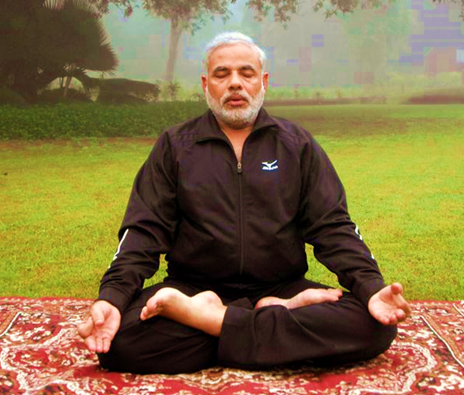
Yoga is a power. Yoga practice to whatever degree possible should become a daily feature in everyone's life. Through the gradual practice, it makes the mind and body impregnable. Here are some of the benefits you may gain through the practice of Yoga;
- Makes your body elastic
- Cleanses and detoxifies your entire physical system
- Makes your mind joyous
- Keeps your body free from any ailment
The world today has exposed us to corruptible living habits and the use of excessive medication. In short, we have forgotten that the body itself has the ability to free itself from most ailments. Yoga is the art of tapping these resources. All that you need in order to perform Yoga is:
- Regularity
- A little time that is convenient for you
- A small well ventilated space
According to the Gheranda Samhita, which is the ancient Sanskrit text, there are hundreds and thousands of Asanas. These postures are as many in numbers as there are numbers of species of living creatures in this universe. To narrow this down, 84 are the best and of the 84 Asanas, 32 have been found useful for mankind. I have compiled the methods on how to perform these Asanas below, so that you may practice them. Please be aware that it is always best to practice Yoga with a trained instructor or a well versed Guru in the art of Yoga. I shall spread out the Asanas and their primary benefits over three installments of 10, 10 and 12 asanas respectively.
Performing the first 10 Asanas
- The Siddhasana: Press the perineum with the base of the left heel and place your other foot firmly above the genitals. Keep your chin steadily on your chest. Remain motionless with the sense organs under control and with steady vision look at the spot between your eyebrows. This posture cures stiffness of the knee and ankles, while toning the lower region of the spine.
- The Padmasana or 'lotus pose', is the most important basic pose for meditation and many other asanas. To perform this pose, sit down and lift your lower right leg to your upper left thigh. Repeat the same with your lower left leg to your right thigh. You should sit with your spine and head erect and gaze at the tip of your nose. The 'lotus pose', helps to clear many physical and emotional problems.
- The Bhadrasana: Place your ankles below the scrotum on both sides of the perineum. Place your left ankle on the left and right ankle on the right (sole to sole). Then hold your feet firmly with your hands that are on their sides, and remain motionless. This posture is also known as the 'happy pose'. It promotes elasticity to the legs as the joints of the knees and ankles are loosened from stiffness. It also males your back bone supple and erect.
- The Muktasana: Place your left heel at the root of your organ of generation and the right heel above that, keep your head and neck straight with the body. This posture makes your backbone erect and after long practice, clairvoyance is induced.
- The Vajrasana: Make your thighs like adamant and place the legs by the two sides of the anus. This posture is also known as 'adamant pose'. This posture strengthens nerves and muscles of your legs in such a way that rheumatism and sciatica can never develop. Ideally this posture should be practiced half an hour directly after a meal as it aids your digestion.
- The Swatikasana: Drawing your thighs together and placing the feet underneath them, keeping the body in its easy condition and sitting straight. This posture almost resembles Siddasana. This asana is easy to practice among the classical constitutional asanas with the same benefits of Siddasana.
- The Simhasana: Place your ankle below the scrotum, on either side of the perineum. Your right ankle on the left side of it and the left ankle on the right. Place your palms on your knees, spread out your fingers, with your mouth opened. Fix your gaze at the tip of your nose with a concentrated mind. This posture is held in great esteem by the highest Yogi. It is an excellent asana that facilitates the three major Bandhas (Mula, Jalandhara, Uddiyana).
- The Gomukhasana: The two feet to be placed on the ground, and the heels to be placed contra wise under the buttocks. Keep your body steady and your mouth raised and sitting equally. This posture resembles the mouth of a cow and aids in the elimination of diabetes, back ache, stiff shoulders and neck aches.
- The Virasana: Place your right foot on your left thigh and the other foot to be turned backwards. This is also known as the 'heron pose'. This posture improves the blood circulation to the lower abdomen regions and the legs are made flexible. Your backbone is also kept erect.
- The Dhanurasana: Spreading your legs on the ground, straight like a stick, while catching hold of the toes with the hands and making the body bent like a bow. This posture is also known as the 'Bow Pose'. This pose has excellent effect on your back muscles while stimulating your internal organs. It also causes your ductless glands to function better and eradicates constipation.
